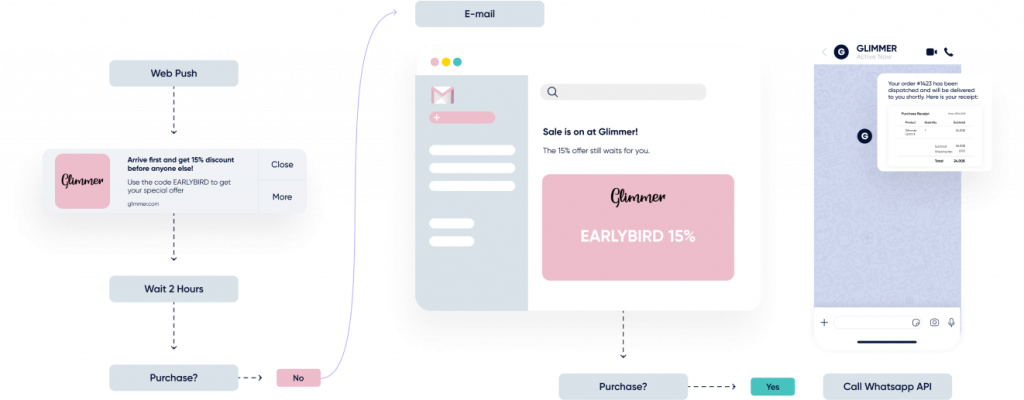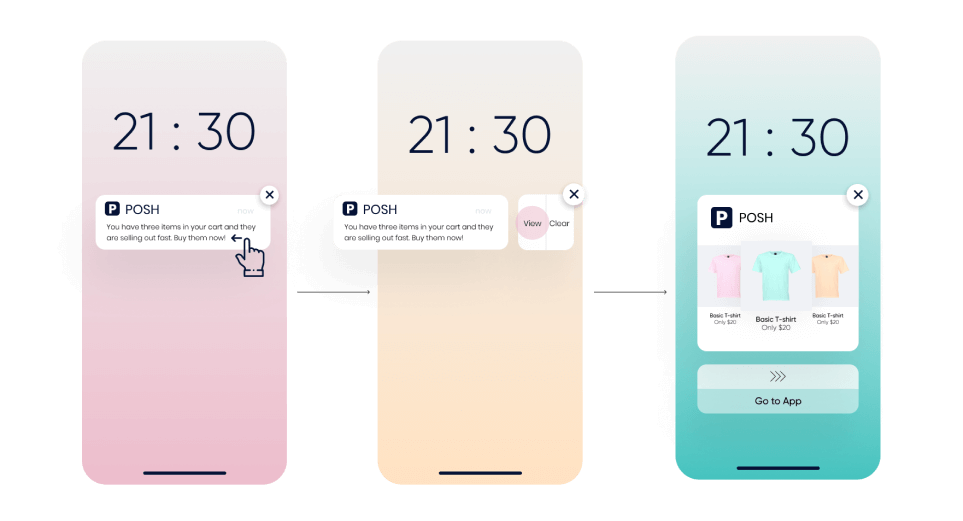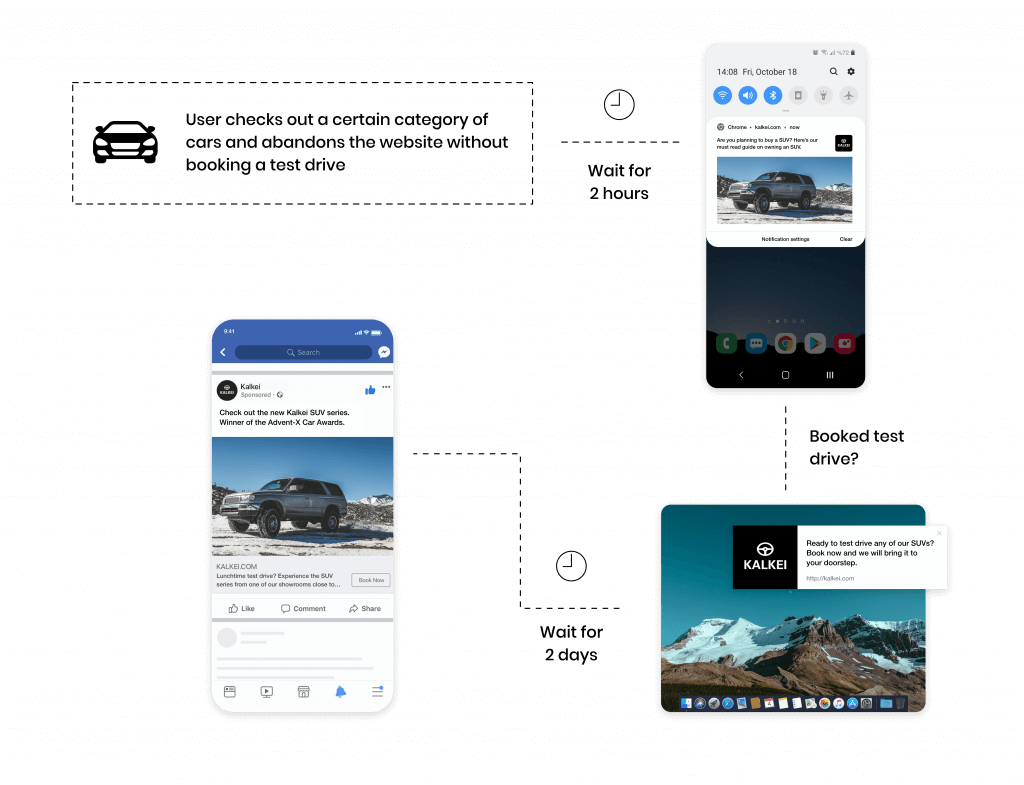A Marketers Guide to Omnichannel vs Multichannel Strategies (With Examples)
Updated on 20 Nov 2025
Customers interact with brands in countless ways, through emails, social media, apps, websites, and messaging platforms. Simply showing up on these channels isn’t enough; what matters is how these interactions work together to create a smooth, meaningful experience. That’s why distinguishing between multichannel and omnichannel marketing is so important.
Multichannel marketing spreads your message across several platforms, but each channel often operates independently. Omnichannel marketing, on the other hand, connects all channels into a unified strategy, creating seamless, personalized experiences that follow the customer wherever they interact with your brand.
This guide will break down the key differences between multichannel and omnichannel strategies, show how businesses are applying them to boost engagement and conversions, and provide actionable tips for building a marketing approach that truly meets your customers’ expectations.
Omnichannel vs multichannel vs cross-channel: What’s the difference?
Across different theories of marketing, the terms omnichannel, multichannel, and cross-channel marketing are often used interchangeably. After all, these strategies all involve multiple channels meant to acquire, engage, and retain customers. Here’s the difference in how they’re connected:
- In multichannel marketing, all the communication channels work in isolation with no connection between any of them.
- Cross-channel marketing usually describes integrating different channels into a sales funnel and select communication channels are connected to a primary communication channel.
- Omnichannel marketing connects all channels to one platform which allows your customers to have one experience with your brand no matter what channel they use. It enables your company to “remember” conversations, keep track of customer behavior and data, and provide a truly personalized experience.
⭐⭐⭐⭐⭐
“We’ve been using Insider’s omnichannel marketing platform for a while now, and the results have been remarkable. The ease of use and intuitive interface make campaign setup a breeze, saving us valuable time and effort. The platform’s automation capabilities have enabled us to deliver timely and relevant messages to our customers and as a result, we’ve seen a conversion rate increase of 14%.”
- Director of eCommerce
Multichannel marketing is still a valid strategy for advertising. The goal of this strategy is to get as many eyes on your brand as possible by reaching out to as many people on as many channels as possible.
Likewise, cross-channel marketing is good for integrating additional channels into a sales funnel, but omnichannel marketing takes that further by expanding the sales funnel into a personalized customer experience.
The disadvantage of multichannel and cross-channel models is the lack of speed and automation that comes with an AI-managed omnichannel model. Once you have a customer’s attention in a multichannel model, it’s difficult to retain their interest, attention, and loyalty because it’s difficult to provide a consistent experience. It’s also much easier to collect data and monitor customer behavior with an omnichannel marketing model with an AI platform that tracks, stores, and shares that data.
Compared to a cross-channel model, the omnichannel model uses the data in real-time to automatically anticipate opportunities and provide relevant updates to the customer, automatically leading them along their customer journey. In traditional cross-channel models, a team would have to monitor, reach out, and contend with the same sorts of challenges we saw in John’s experience.

Why is omnichannel marketing gaining popularity?
In essence, omnichannel marketing is growing in popularity because it enables marketers and teams to do more with less effort and cost.
Omnichannel marketing keeps your brand messaging and user experience consistent and seamless across multiple channels and devices. This enables brands and marketers to reimagine digital experiences by curating a journey for customer.
But how do consumers respond to omnichannel marketing?
According to Capital One Shopping, about 73% of retail consumers now shop across multiple channels, meaning they do not stick to just one way of engaging with brands. Meanwhile, research from McKinsey shows that 81% of people browse and research across two or more touchpoints, whether via their phone app, desktop, or in a physical store, before making a purchase.
Today’s shoppers move fluidly between devices and platforms, comparing prices on apps, browsing online catalogues, buying in-store, or scheduling pickup.
This behavior has a direct payoff for retailers because omnichannel customers tend to spend more and return more often.
Building an omnichannel marketing campaign
It’s important to remember that every company should create its own omnichannel marketing strategy—something that is unique to the brand’s goals, style, and strategy. Several departments can be involved in the development of the brand’s omnichannel strategy development, but the main ones involved are usually:
- Marketing
- Sales
- Product
- Customer support
Feedback from these departments can help you better understand how to curate your ideal customer experience. Ask about things like what language to use with your customers, how soon to follow up, how to best share information, and what tasks can be automated.
Omnichannel benefits are multifaceted across the company: the marketing team will now be able to access more information and data about user behavior. The sales team will be able to fine-tune the timing of messages and keep track of customer journeys (customer journey analytics). The product teams will have more access to customer feedback without needing to ask for it. And a lot of pressure will be taken off customer support in terms of fielding quick questions and sharing information with other departments.
An AI-managed omnichannel platform won’t necessarily replace teams or take away jobs. nstead, it helps take the pressure off and lets people spend time on other valuable areas.
⭐⭐⭐⭐⭐
“We knew we needed an alternative to multichannel marketing, but we had no idea just how much Insider would change our marketing efforts. When we first found the platform, we thought it would simply connect our most-used channels, little did we know it had everything we needed to really up our marketing game. We can’t fault the platform, and I constantly recommend it.”
– CMO
What makes an omnichannel experience effective?
In the past, companies would struggle to incentivize customers to use specific channels or touchpoints. In other words, they would ask customers to learn how to integrate into their brand-specific channel. The perfect omnichannel experience turns this model on its head by integrating the brand into whatever channel the customer already prefers to use.
The first step towards creating the perfect omnichannel experience for your brand is to understand your customer. Not just in terms of online or offline behavior, but a deeper understanding of the human beings you serve.
Customers are using a range of third-party apps as part of their shopping experience. It’s important for brands to understand what to integrate with and why customers enjoy using a given app so you can learn how to integrate the app into your omnichannel marketing strategy.
A centralized platform like Architect gives you the ability to connect to a wide variety of commonly used apps. Of course, no single platform can connect to everything right off the bat, but as you grow and understand where your customers are (or where they’re moving to) an omnichannel strategy allows you to focus on building bridges to your platform rather than brand new isolated channels that need to be independently managed.

Building the most effective omnichannel marketing strategy
Once you understand your customer’s needs and have feedback from your teams on how you can optimize your operation, it’s time to fine-tune your strategy.
- Build your customer experience plan
Get to know the channels your customers are using, how they behave across these channels, and how you can curate an experience that flows. You might try creating a story with a beginning, middle, and end, you might use an existing sales funnel and fine-tune it to be more efficient–in any case you want to think about how you can make the customer feel taken care of.
- Put the data to good use
Behavioral pattern data, online search behavior, and search intent insights can be great identifiers of what customers are looking for and how you can make that information readily available to them within their customer journey.
- Individualize each customer journey
Think about how you can personalize the experience by giving customers options to choose how and when they would prefer to interact. You can anticipate preferences by categorizing users into different user segments based on certain behavior patterns. This level of micro-segmentation will help you create individualized journeys for each customer segment.
- Focus on contextualized engagement
The make-or-break deal of an omnichannel marketing strategy is often getting the context right. When customers get an irrelevant message or a notification at the wrong time, that reflects poorly on your brand and diminishes engagement. This is why it’s so important to have your team behind the automation–nobody will be able to design and fine-tune the timing of certain notifications specific to your brand better than your sales team.
- Adopt a customer-centric approach
What ultimately sets omnichannel marketing apart is making the customer’s experience, rather than their behavior or data, the center of attention. It transforms the dynamic from transactional to relationship. Customers engaging with a multichannel marketing model may feel like the brand is trying to extract information from them. Whereas, in an omnichannel model, they feel like the brand is trying to help them.
⭐⭐⭐⭐⭐
“Nothing comes close to the power of Insider’s omnichannel marketing solution. Their seamless integration across multiple channels has significantly improved our campaign performance. The level of personalization and targeting options is outstanding, allowing us to create engaging experiences in an incredibly short amount of time.”
- VP of Marketing
Omnichannel customer journey strategy in action
Jane Doe arrives at a car manufacturer’s website to browse SUVs. The aim of the car manufacturer, AmeriCar, is to make the user move on from browsing to booking a test drive. But for some reason, Jane leaves the website without booking the test drive.
In order to re-engage the customer, AmeriCar needs to reach out to the user strategically, engaging them on the right channel with the right messaging. Any irrelevant communication in this phase can deter Jane from returning to the website.
Thankfully, AmeriCar has partnered with Architect, Insider’s customer journey builder tool. Architect uses predictive segmentation to tailor journeys to your customers in real-time, and can also identify touchpoints and drop-offs.
In Jane’s example, a custom omnichannel journey for the car manufacturer looks something like this:
- Two hours after Jane dropped off the website, a mobile push notification is sent to her mobile device reminding Jane of her plan to buy an SUV. Or, if Jane did not have a concrete plan to buy, Architect could provide her with must-read information on what to consider when purchasing a new car.
- If Jane has still not booked a test drive, then a second reminder—a desktop web push is sent to her desktop browser reminding her of the option to book a test drive or have the AmeriCar dealership bring her an SUV for a test drive.
- Two days later, Jane still hasn’t booked a test drive, so the third layer of engagement is built into the journey. This time, Jane is reached on her most-used social media platform with a Facebook ad.
The result: Jane sees the Facebook ad and is reminded to book her test drive. She finds an SUV that’s perfect for her and makes a purchase. Over a 12-month period, AmeriCar’s omnichannel strategy reengages more customers, leading to a 14% increase in annual revenue.

Stay ahead of the competition with an omnichannel marketing strategy
Omnichannel marketing gives companies a competitive advantage today, and is already becoming a standard of business and marketing–with technology evolving exponentially, nobody is going to want to fall behind the curve. The more multichannel marketing channels you build today, the more uprooting of outdated and dysfunctional systems they will have to contend with tomorrow.
While the vast range of platforms and channels provides more opportunity to reach customers, it also means more competition than ever before. Reaching a customer once is no longer enough–you need to be memorable. Insider offers a variety of intuitive, no-code solutions that can help your team achieve marketing goals, gather more data,, and free up focus for creating customer experiences like never before.
If you want to find out more, you can explore our platform or book a demo with one of our customer success managers, we’d love to hear from you.
Omnichannel vs multichannel FAQs
Omnichannel marketing refers to a seamless, integrated approach where businesses create consistent customer experiences across all channels and touchpoints from one platform.
Multichannel marketing involves using multiple independent channels to interact with customers, but these channels may not be fully integrated, leading to potential inconsistencies.
Omnichannel retail is a retailing strategy that aims to provide customers with a consistent shopping experience across various channels, such as online, in-store, and mobile.
Multichannel retailing refers to retail businesses using multiple channels to sell their products, but these channels may not be interconnected, resulting in separate experiences for customers.
Omnichannel vs. multichannel highlights the difference between a fully integrated and consistent customer experience (omnichannel) versus using multiple channels without complete integration (multichannel).



















